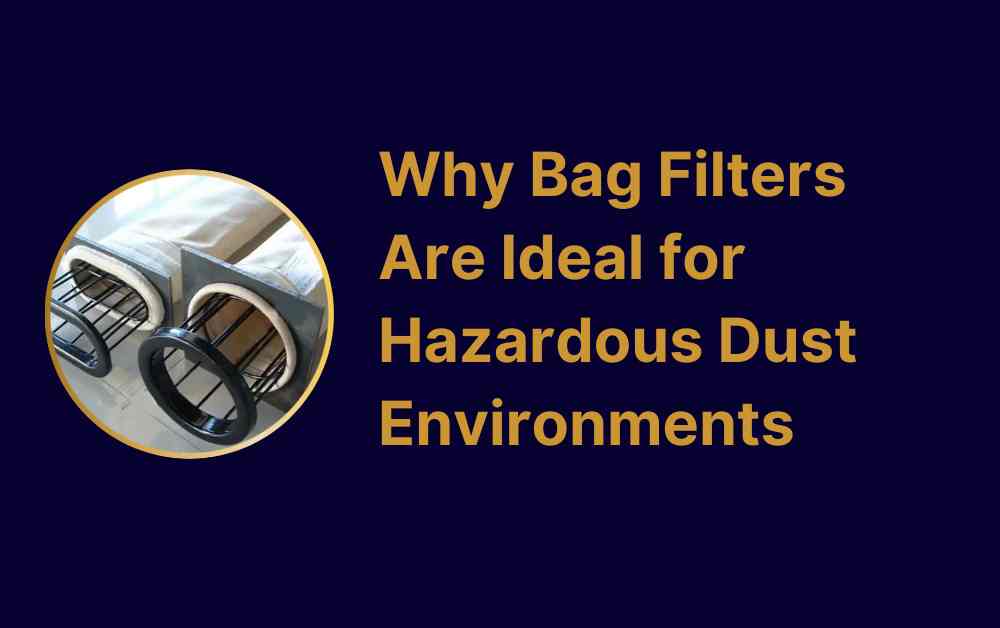Understanding Bag Filters and Their Importance
Bag filters are an essential component in many industrial settings, especially where dust and particulate matter are a concern. These filters are designed to trap dust particles from the air, preventing them from circulating within the environment. This is crucial in industries like mining, manufacturing, and construction, where dust can pose significant health and safety risks to workers. Bag filters are typically made from a variety of materials, including cotton, polyester, and other synthetic fabrics, which can capture and hold dust particles as air passes through them.
NOTE : “Ready to experience the best air quality with a reliable bag filter in UAE? Contact us today to find the perfect bag filter solution for your needs and ensure a healthier environment for your workspace. Don’t wait – enhance your air filtration system now!”
One of the primary reasons bag filters are so important is because they help maintain air quality. In any workplace where dust is present, inhaling dust particles can lead to respiratory issues and other health problems. By using bag filters, companies can reduce the amount of dust in the air, thereby protecting the health of their employees. Moreover, bag filters also help in complying with environmental regulations, which often require businesses to control the amount of particulate matter they release into the atmosphere. This compliance is not just a legal requirement but also a commitment to environmental responsibility.
Additionally, bag filters contribute to the longevity of machinery and equipment. Dust can accumulate in machines, causing them to malfunction or wear out more quickly. By filtering the air and removing dust particles, bag filters help keep equipment running smoothly and reduce maintenance costs. This not only saves money in the long run but also ensures that operations can continue without unexpected downtime. The efficiency and reliability of bag filters make them a preferred choice in many industrial applications where dust control is critical.
The Mechanism of Bag Filters
Bag filters operate through a straightforward yet effective mechanism. When air containing dust particles enters the filter housing, it passes through the fabric of the bag filter. The fabric traps the dust particles on its surface, allowing only clean air to pass through. This process is known as surface filtration. The efficiency of bag filters can be attributed to the size and density of the fabric pores, which are small enough to capture even tiny dust particles.
Over time, as dust accumulates on the surface of the bag filter, a layer known as the dust cake forms. This layer actually enhances the filtration process by trapping even more particles. However, this also means that the filter needs to be cleaned or replaced periodically to maintain its efficiency. In many industrial settings, this cleaning process is automated, with systems in place to shake or pulse the bag filters, dislodging the dust cake and restoring the filter’s functionality.
The materials used in bag filters are chosen for their durability and resistance to various environmental factors. For example, filters used in high-temperature environments are often made from heat-resistant materials, while those used in chemical industries may be made from fabrics that can withstand exposure to corrosive substances. This versatility makes bag filters suitable for a wide range of applications, from simple dust collection in woodworking shops to complex filtration systems in large industrial plants.
Benefits of Using Bag Filters in Hazardous Dust Environments
Using bag filters in hazardous dust environments offers numerous benefits. Firstly, they significantly improve air quality, making the workplace safer for employees. In environments where hazardous dust is present, such as in metalworking or pharmaceutical manufacturing, the risk of inhaling harmful particles is high. Bag filters effectively capture these particles, reducing the likelihood of respiratory illnesses and other health issues among workers. This not only protects the workforce but also enhances productivity, as healthier employees are less likely to take sick leave.
Another key benefit is the protection of equipment. Hazardous dust can be abrasive and corrosive, leading to faster wear and tear on machinery. By filtering out these particles, bag filters help extend the life of equipment, reducing the need for frequent repairs and replacements. This translates to cost savings for businesses and minimizes downtime, ensuring that production processes run smoothly and efficiently.
Bag filters also play a crucial role in environmental compliance. Many industries are subject to strict regulations regarding the emission of particulate matter. By using bag filters, companies can meet these regulatory requirements, avoiding fines and potential legal issues. Moreover, demonstrating a commitment to reducing emissions can enhance a company’s reputation and help build trust with customers and stakeholders. In a world where environmental responsibility is increasingly important, using bag filters to control dust emissions is a proactive step towards sustainability.
Challenges and Solutions in Implementing Bag Filters
While bag filters offer many advantages, their implementation can come with challenges. One common issue is the need for regular maintenance. As dust accumulates on the filter, it needs to be cleaned or replaced to maintain efficiency. This can be time-consuming and may require specialized equipment. However, many modern systems are designed with self-cleaning mechanisms, such as reverse air or pulse-jet cleaning, which automatically remove the dust cake from the filter surface. These systems reduce the need for manual intervention and ensure that the filters remain effective over extended periods.
Another challenge is selecting the right type of bag filter for a specific application. The choice of filter material and design depends on the nature of the dust being filtered, the operating temperature, and other environmental factors. For instance, filters used in high-temperature environments must be made from materials that can withstand heat without degrading. Consulting with experts or manufacturers can help in choosing the appropriate filter for each specific need, ensuring optimal performance and longevity.
Finally, there is the challenge of initial cost. High-quality bag filters and filtration systems can be expensive to install. However, the long-term benefits, including improved air quality, reduced health risks, extended equipment life, and compliance with environmental regulations, often outweigh the initial investment. Companies can also explore financing options or phased implementation to manage costs more effectively. Investing in quality bag filters is a strategic decision that pays off in terms of operational efficiency and safety.
Conclusion: The Value of Bag Filters in Hazardous Dust Environments
In conclusion, bag filters are an invaluable asset in managing hazardous dust environments. Their ability to improve air quality, protect health, extend equipment life, and ensure environmental compliance makes them essential in various industrial settings. While there are challenges in their implementation, modern technology and careful selection can overcome these obstacles, making bag filters a practical and effective solution.
By investing in bag filters, companies demonstrate a commitment to safety, health, and environmental responsibility. This not only enhances their operational efficiency but also builds trust with employees, customers, and stakeholders. In a world where industrial operations must balance productivity with sustainability, bag filters provide a reliable means of achieving this balance. As industries continue to evolve, the role of bag filters in maintaining safe and efficient workplaces will only become more critical.
For more insightful articles related to this topic, feel free to visit relxnn









